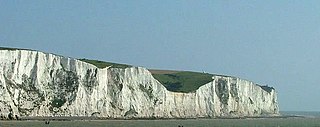 |
Wikipedia Commons
The Woman Taken in Adultery c.1805 for Thomas Butts
|
When Blake choose to illustrate the Bible he selected incidents that
were apropos to the teachings he wanted to promulgate. The desire to
substitute forgiveness for vengeance prompted him to illustrated the
Woman Taken in Adultery just as it had prompted John to include the
story in his Gospel. The two men realized that vengeance was the
accepted practice for dealing with offenders against the law. The
punishment for committing adultery in Mosaic Law was a particularly
harsh one - the offender should be stoned to death.
I've recently become more aware that the practice of stoning is still being enacted. Last week I watched The Kite Runner,
a movie which showed the stoning to death of a woman punished by the
Taliban for violating Sharia law in Afghanistan. A less dramatic
incident was shown in the movie, Loving Vincent about Van
Gogh. A group of boys injured him by throwing large stones while his was
painting in a field. His offense was being peculiar and an outsider who
would not conform.
Blake's picture does not portray a scene of violence. Instead shows
the avoidance of violence through the withdrawal of the accusers. The
accused woman is left with Jesus who refuses to be her accuser. She is
free to leave with the admonition to sin no more. Blake makes us aware
of the severity of the threat against her only by the fact that her
hands are bound behind her back.
Blake's awareness of the violence of stoning as a method of punishment is shown in his image of The Blasphemer which illustrates Leviticus, Chapter 24.
[10] And the son of an Israelitish woman, whose father was an
Egyptian, went out among the children of Israel: and this son of the
Israelitish woman and a man of Israel strove together in the camp;
[11]
And the Israelitish woman's son blasphemed the name of the LORD, and
cursed. And they brought him unto Moses: (and his mother's name was
Shelomith, the daughter of Dibri, of the tribe of Dan:)
[12] And they put him in ward, that the mind of the LORD might be shewed them.
[13] And the LORD spake unto Moses, saying,
[14]
Bring forth him that hath cursed without the camp; and let all that
heard him lay their hands upon his head, and let all the congregation
stone him.
[15] And thou shalt speak unto the children of Israel, saying, Whosoever curseth his God shall bear his sin.
[16]
And he that blasphemeth the name of the LORD, he shall surely be put to
death, and all the congregation shall certainly stone him: as well the
stranger, as he that is born in the land, when he blasphemeth the name
of the LORD, shall be put to death.
...
[23] And Moses spake to the children of Israel, that they should
bring forth him that had cursed out of the camp, and stone him with
stones. And the children of Israel did as the LORD commanded Moses.
Jerusalem, Plate 25, (E 170)
"Why did you take Vengeance O ye Sons of the mighty Albion?
Planting these Oaken Groves: Erecting these Dragon Temples
Injury the Lord heals but Vengeance cannot be healed:
As the Sons of Albion have done to Luvah: so they have in him
Done to the Divine Lord & Saviour, who suffers with those that suffer:
For not one sparrow can suffer, & the whole Universe not suffer also,
In all its Regions, & its Father & Saviour not pity and weep.
But Vengeance is the destroyer of Grace & Repentance in the bosom
Of the Injurer: in which the Divine Lamb is cruelly slain:
Descend O Lamb of God & take away the imputation of Sin
By the Creation of States & the deliverance of Individuals Evermore Amen
Thus wept they in Beulah over the Four Regions of Albion
But many doubted & despaird & imputed Sin & Righteousness
To Individuals & not to States, and these Slept in Ulro."
Jeremiah 31
[33] But this shall be the covenant that I will make with the
house of Israel; After those days, saith the LORD, I will put my law in
their inward parts, and write it in their hearts; and will be their God,
and they shall be my people.
[34] And they shall teach no
more every man his neighbour, and every man his brother, saying, Know
the LORD: for they shall all know me, from the least of them unto the
greatest of them, saith the LORD; for I will forgive their iniquity, and
I will remember their sin no more.
John 8
[5] Now Moses in the law commanded us, that such should be stoned: but what sayest thou?
[6]
This they said, tempting him, that they might have to accuse him. But
Jesus stooped down, and with his finger wrote on the ground, as though
he heard them not.
[7] So when they continued asking him, he
lifted up himself, and said unto them, He that is without sin among you,
let him first cast a stone at her.
[8] And again he stooped down, and wrote on the ground.
[9]
And they which heard it, being convicted by their own conscience, went
out one by one, beginning at the eldest, even unto the last: and Jesus
was left alone, and the woman standing in the midst.
[10] When
Jesus had lifted up himself, and saw none but the woman, he said unto
her, Woman, where are those thine accusers? hath no man condemned thee?
[11] She said, No man, Lord. And Jesus said unto her, Neither do I condemn thee: go, and sin no more.
_object_22_Spring.jpg)
.jpg)






.jpg/600px-Jerusalem_The_Emanation_of_The_Giant_Albion%2C_copy_E%2C_object_62_(Bentley_62%2C_Erdman_62%2C_Keynes_62).jpg)
.jpg)

